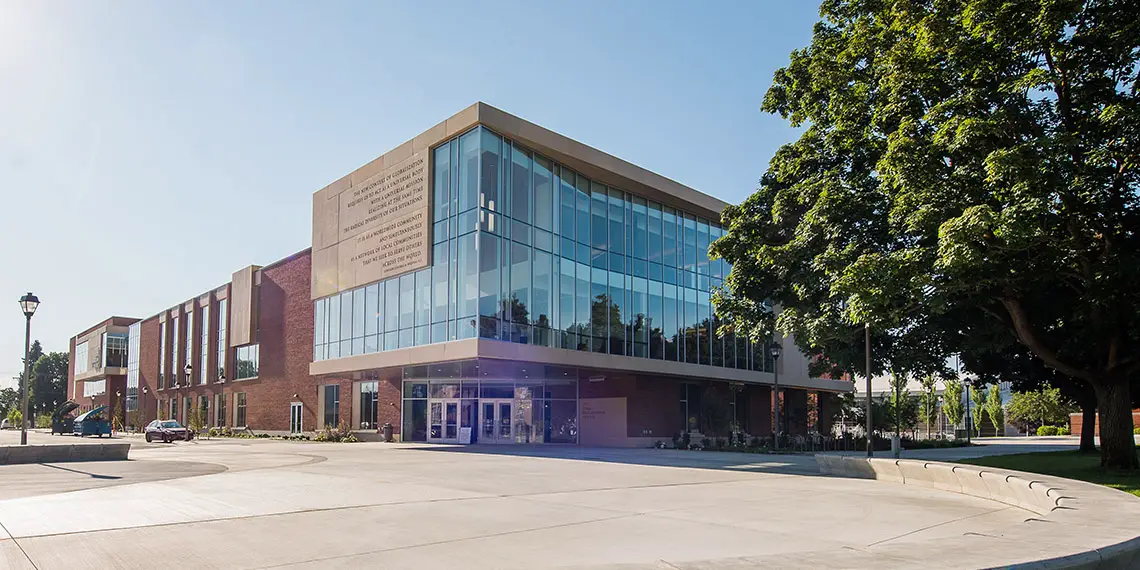Northwestern Mission and Vision Statement Analysis

Northwestern’s mission statement is “to educate students, engage the community, and enrich the Northwestern experience.” The mission statement puts emphasis on the transformative leadership of the institution and what it is all about in impacting everyone it comes in contact with. The following factors relate to the mission statement:
- Improving communities. The first component in the mission statement of Northwestern looks at its role in the community it operates in. Considering the historical elements and original trajectories associated with the university, Northwestern has so far made significant progress in achieving this need especially in the transformation of the people within its locality. It does this by educating the local students in the Northwestern way while at the same time exposing them to innovations and global strategies that eventually benefits the local communities as well.
- Exceeding expectations. Northwestern mission emphasizes on offering top quality exposure to both the community and its students. The university has gone a step further to revolutionize its research and innovation programs to boost the experience of its students. For instance, the innovation and entrepreneurship at Northwestern offer more than conventional training – it imparts hands-on and real-life skills. To demonstrate the importance of this component in Northwestern’s mission statement, the institution has gone a step further to ensure there is no limitation in learning based on programs or schools through integrative systems that spill over to communities.
- Empowering people. Northwestern purposes on training students to become productive and future leaders adequately molded in the Northwestern experience. Northwestern is very categorical in its journey of liberalizing its people through knowledge just as it was enshrined in its concept of foundation. It does this through targeted and specialized programs as shown by its academic programs that are best suited for assisting students to chart their career paths in every global sense.
Introduction
Northwestern is perhaps one of the institutions that demonstrate the power of gradual and consistent growth when it comes to prominence within its area of operations. Ever since its foundation in the 1850s, the institution has shown its desire to top in the line of academics through its targeted and specialized academics. In fact, it has become a darling and a destination for both local and international students due to the vibrancy of its mission and vision statements.
A corporate vision statement forges the future destination of a company. It indicates the position an institution wants to be within a stipulated timeline. In the case of Northwestern, the institution lays emphasis on the partnership position it seeks to assume in advancing higher quality learning in students.
Its vision essentially demonstrates its dependability in leading all its customers to prosperity in the academics. On the other hand, the mission statement reveals the steps or the strategic actions any company exploits to take it to the desired vision. For Northwestern, the institution outlines its three critical actions that touch not only on the direct beneficiaries but also the community and the specific northwestern experience.
In this way, it echoes its reliability and specialty in what it offers. The success enjoyed by Northwestern has a lot to do with how the organization’s core values influence it to stay true to its mission and vision statements. For instance, values such as social justice, innovation, integrity, stewardship, and collaboration go as far as dictating the overall behavior of the institutions. As a result, this creates a conducive environment where the institution can gradually work towards achieving both its mission and vision
Vision Statement
Northwestern’s vision statement is “We will be full partners in the student learning experience.” The vision statement tells more about the lateral leadership approach Northwestern assumes to take learning experience within its settings to the top level. The focus of the university is on a student-friendly and targeted approach to promote ingenuity among its students. Various components can be drawn from this vision statement.
- Be full partners
- Enhancing student learning experience
In the fists component of its vision statement, Northwestern recognizes what it needs to do to remain as one of the most transformative academic institutions both locally and on a global scale. Rather than adopting a top-down leadership technique, the institution values close interaction and lateral influence. In fact, it sees this as its primary strategic management approach with a great probability of stimulating better outcomes that agrees with the general vision of the facility. The reputation of the leadership and administration approach characterizing Northwestern is a reflection of how much the university values close guiding of its students. The second component is directly related to and influenced by the first one. It emphasizes on providing the learners with the most dynamic and integrative programs to ensure they not only enjoy but also gain maximum benefits. To satisfy this component acknowledges the need for diversity, and as a result, it integrates numerous learning-oriented activities as shown by the campus life section. All these go further to maximize the interaction of students with other experts, and this takes Northwestern closer to its vision.
Core Values
Northwestern core values include “Integrity, social justice, innovation, collaboration, and stewardship.” Its values describe the critical aspects that guide the operations of Northwestern and how all the stakeholders conduct themselves. The emphasis of these values is on creating ideal conditions where maximum learning exists. The following elements relate to Northwestern values.
- Integrity
- Social justice
- Innovation
- Collaboration
- Stewardship
Northwestern prioritizes on ensuring that all its activities conform to the standards and professional requirements in the academic niche. It relates to the second component of its core values that promote a free learning environment for all without any form of alienation or favor. In this way, this boosts the reputation of the university making it one of the most coveted education destinations for all. Northwestern values also emphasize constantly improving the learning processes through innovatively designed programs that in turn stimulate innovation among the learners. Most importantly, Northwestern values collaboration as one of the foundations for the institution. The ‘we will’ campaign is evidence of how critical collaboration has been for Northwestern University for decades. Together with stewardship, the university ensures all its resources are channeled towards the achievement of its mission and vision.
References
Asma-na-hi Antoine, G. C., Chettleburgh, S., Doerksen, M., McLeod, K., Thexton, T., & Young, M. (2018). Royal Roads University Student Mental Health Framework: Vision, Principles and Core Elements.
Coloma, R. S., Daza, S. L., Rhee, J. E., Subedi, B., & Subreenduth, S. (2015). New editors’ vision statement. Educational Studies, 51(1), 1-2.
Compact, C. (2015). Mission and vision.
David, F. R. (2011). Strategic management: Concepts and cases. Pearson/Prentice Hall.
Fitzgerald, Ciara, and James A. Cunningham. “Inside the university technology transfer office: mission statement analysis.” The Journal of Technology Transfer 41.5 (2016): 1235-1246.
Freeman, R. E. (2016). Ethical leadership and creating value for stakeholders. In Business ethics: New challenges for business schools and corporate leaders (pp. 94-109). Routledge.
Gurley, D. K., Peters, G. B., Collins, L., & Fifolt, M. (2015). Mission, vision, values, and goals: An exploration of key organizational statements and daily practice in schools. Journal of Educational Change, 16(2), 217-242.
Hitt, M., & Duane Ireland, R. (2017). The intersection of entrepreneurship and strategic management research. The Blackwell handbook of entrepreneurship, 45-63.
Holosko, M. J., Winkel, M., Crandall, C., & Briggs, H. (2015). A content analysis of mission statements of our top 50 schools of social work. Journal of Social Work Education, 51(2), 222-236.
Karvinen, I., Fanuelsen, O. E., van Leeuwen, R., Damsma-Bakker, A., Oosterhoff-Zielman, M., Ylönen, M., & Tveit, B. (2018). Defining the mission-from policy statement to learning outcomes. A triple case study of faith-based nursing education Institutions in Northern Europe.
Laird-Magee, T., Gayle, B. M., & Preiss, R. (2015). Personal values and mission statement: A reflective activity to aid moral development. Journal of Education for Business, 90(3), 156-163.
Masa’deh, R. E., Shannak, R., Maqableh, M., & Tarhini, A. (2017). The impact of knowledge management on job performance in higher education: The case of the University of Jordan. Journal of Enterprise Information Management, 30(2), 244-262.
Northwestern University – About.
Taiwo, A. A., Lawal, F. A., & Agwu, E. (2016). Vision and Mission in Organization: Myth or Heuristic Device? The International Journal of Business & Management, 4(3).











